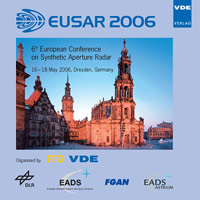Using Satellite Yaw Technology to Avoid Blind Zone in Wide Swath High Resolution SAR
Konferenz: EUSAR 2006 - 6th European Conference on Synthetic Aperture Radar
16.05.2006 - 18.05.2006 in Dresden, Germany
Tagungsband: EUSAR 2006
Seiten: 4Sprache: EnglischTyp: PDF
Persönliche VDE-Mitglieder erhalten auf diesen Artikel 10% Rabatt
Autoren:
Wang, Xiaoqing; Zhu, Minhui; Chen, Yongqiang (National Key Lab of Microwave Imaging Technology, Institute of Electronics, Chinese Academy of Sciences, Beijing 100080, P. R. China)
Inhalt:
There is a well known trade off between swath width and azimuth resolution for conventional strip mode SAR (Synthetic Aperture Radar). But in many fields of SAR application which require global and dynamic surveillance or frequent surveillance of a certain part of the terrestrial surface, the swath of SAR is expected to be much wider while maintaining considerable high resolution. Some wide swath SAR methods that maintain high resolution have been presented to resolve this trade off in recent 20 years such as multiple elevation beam technology, multiple azimuth phase center technology, and elevation multi-receiver technology and so on. The blind zone problem presents in quite a few wide swath high resolution SAR technologies such as multiple elevation beam technology, multiple bandwidth technology, multiple elevation receiver technology and so on, because the same antenna is used for both transmitting and receiving. The width of blind zone varies from 1km to tens kilometer in proportion to the pulse duration time, which is intolerable in many applications. A varying pulse repeat time technology has been presented to avoid the blind zone, while it is very complex to be realized and its azimuth ambiguity is rather high. In this paper, the satellite yaw technology is studied to avoid blind zone, it is simpler to realize and the azimuth ambiguity is rather low compare to the varying pulse repeat time technology. It is well known that if the satellite flies with a yaw angle, the radial velocity of the targets will be not zero and the targets will cross quite a lot range resolutions during the synthetic time. If the yaw angle is so large that the targets affected by blind zone can cross the blind zone, its signal will be received by SAR. So the yaw technology is studied in this paper to resolve the blind zone problem. The principle of this technology is studied, the relationship between the yaw angle and the blind zone width is given, the resolution of the target affected by blind zone is calculated, and the simulation result is given at last


